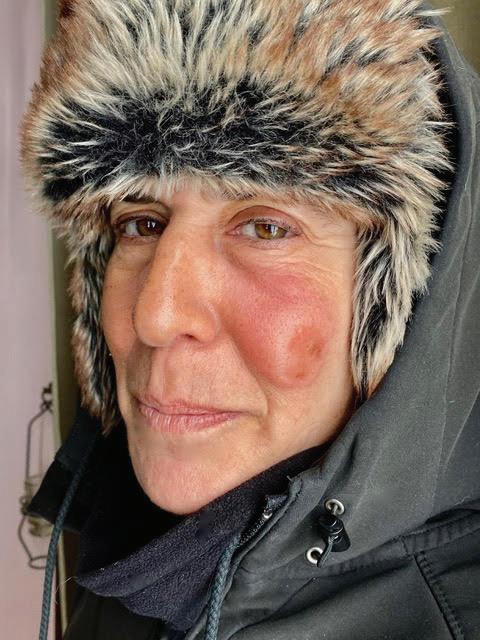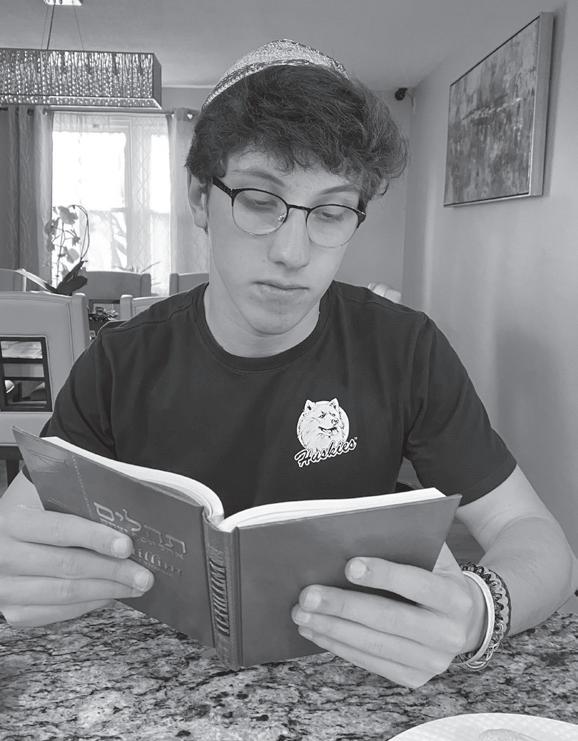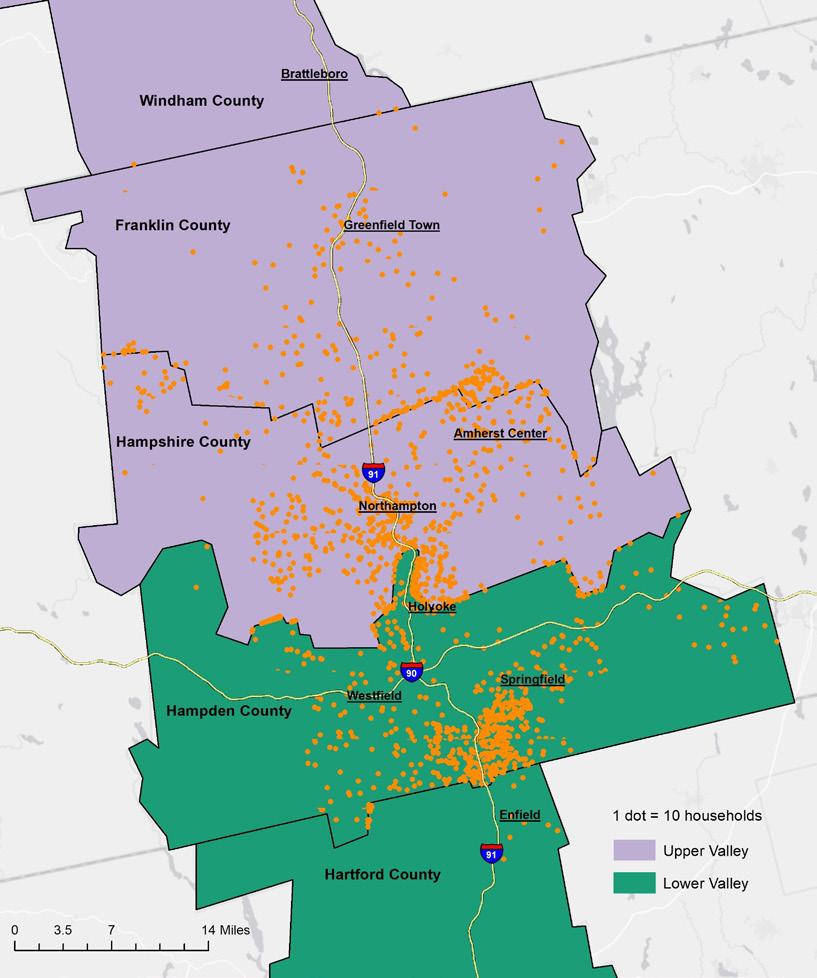
4 minute read
Jewish and African-American actor
MARLA BRODSKY AND HER 12 HILLTOP SLED DOGS ON DAY 20 OF THE SERUM RUN EXPEDITION.
to Gan Keshet Preschool and then to Lander Grinspoon Academy, the Solomon Schechter School of the Pioneer Valley. She was bat mitzvahed at CBI (Congregation B’nai Israel.). We joined the Conservative synagogue, but this is also a progressive area so what I grew up with, I also found here 40 years later.”
As owner of Hilltown Sled Dogs, Brodsky calls herself an “Ambassador for the world of Sled Dog Sports.” Her kennel offers sled dog lessons and rides, hikes with the dogs, demonstrations, education, and tours.
In recent summers, her summer camp has grown; in 2019 it was filled to capacity. As some of her campers have gotten older and more experienced, they have become apprentices, training and helping out on sled runs, with the goal of becoming mushers themselves.
In recent years Brosky has also raced and won mushing competitions throughout New England, the Midwest and Canada. She competed in the World Championships in Sweden last fall.
Yet, what she really wanted to do was go on a trek through Alaska.
“My goal was to go back to Alaska with my own team and train and race there, and for ten years I would say, this year I’m going to Alaska,’” she said. “This year my business has finally grown and finally become successful enough, so financially I was able to take my dog team to Alaska. The winter before, every client that called me, I just worked, worked, worked. With every client and every camper, I put money in the bank.”
She even wore the “Jonathan the Husky” costume and wandered around the University of Connecticut at Christmas-time with a live husky to make money for the trip. “It was good money,” she says.
Brodsky also has received support from Common Capital, the non-profit community loan fund in Springfield. “They are very supportive of local and women-owned businesses.”
When Brodsky learned that the commemorative Serum Run Expedition was going to take place, she applied and was selected to participate.
The 674-mile trek commemorates the historic 1925 serum run by 20 mushers – mailmen -- who relayed life-saving anti-toxin medication to Nome and the surrounding towns during a diphtheria epidemic.
The Serum Run trek hadn’t been run for nearly 10 years, but this year was revived by Alaskan graduate student Robert Forto for his master’s degree project.
In December, Brodsky loaded up her dogs and headed for Alaska to train. She rented a cabin on a corner in Nenana, Alaska, which she called “mushing central… More dog teams went past our cabins than cars.”
Brodsky was one of five mushers, all women over the age of 50 who called themselves “The Fabulous 5. They were accompanied by eight snow-machiners, who hauled gear and helped break trail, as well as a veterinarian and a doctor.
Mushing during the day, the group stayed overnights in schools, bush cabins, arctic oven tents and roadhouses along the route that took them from Nenana through towns including Old Minto, Beaver Point Lodge, Manley, Tanana, Bone Yard Cabin, Galena, Old Woman Cabin, Koyuk, White Mountain, Safety/Nuuk, and finally Nome.
The expedition was challenging. Mushing for many miles per day was exhausting for both the dogs and mushers, and at times the temperature was below -40 degrees Fahrenheit.
BRODSKY GETS SOME LOVE FROM A COUPLE OF HER MALAMUTES.

The group finally made it to Nome on March 11.
“It was the perfect focus for my winter because it took me across two thirds of the Iditarod Trail,” she said.
Brosky found that there were some parallels between the historic trek and what is happening today.
“Once we arrived in Nome I called my daughter and she said, ‘Mama, have you heard about the coronavirus?’ I said, ‘Of course,’ but that was when I realized I needed to get home,” she said. “The goal became to rush to get from Alaska through Canada and to the lower 48 so I could get home while I still could. So I have these parallel stories of driving my dog team, then driving my trailer and truck and rushing, literally, to get from one end of the U.S. to the other.”
Getting home was a bit of an ordeal. After dealing with mechanical problems with her truck, she and her assistant then had to figure out how to get back into the U.S. when some parts of the border with Canada were closing. They finally crossed from Canada into Montana, then tried to drive through rural areas to avoid bigger cities where Covid-19 could already be a problem. She had to quarantine for 14 days when she got home, but was back in time to experience four virtual seders with families and friends. Brodsky spent the month of April applying for PPP and other grants to keep her business running.
“I need to pay staff to help take care of the dogs. For me to exercise 20 dogs would be over the top,” she laughed.
And in a controlled environment and under special protocols, camp will be open, she said.
Brodsky now plans to write two children’s books about her recent experience in Alaska with her dogs.
She also hopes to do some motivational speaking and to show slides of her dogs and her treks, and maybe to produce a television show about sled dogs.
“People are looking for diversions now,” she said. “Maybe this is going to be a new outlet and a new direction for me.” n









